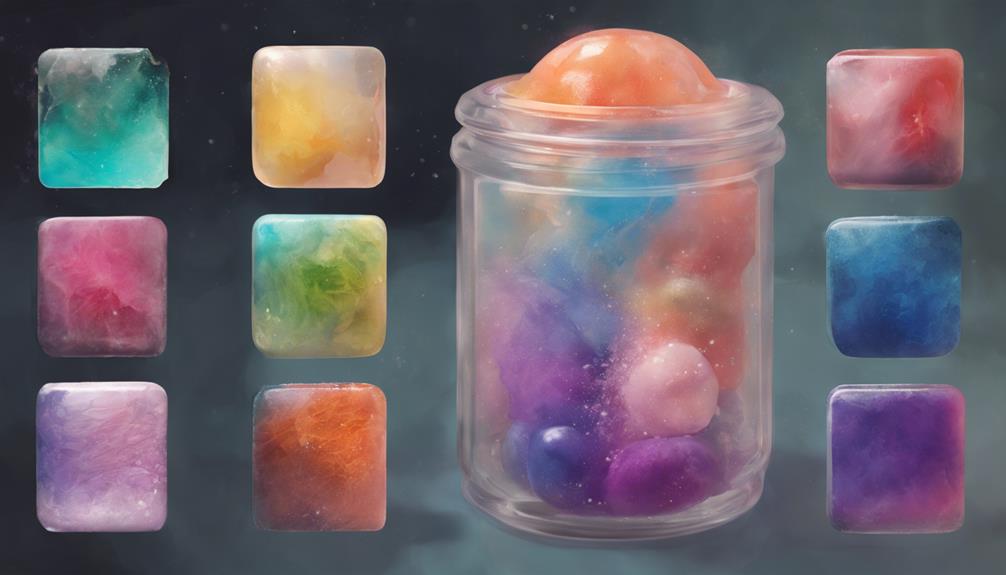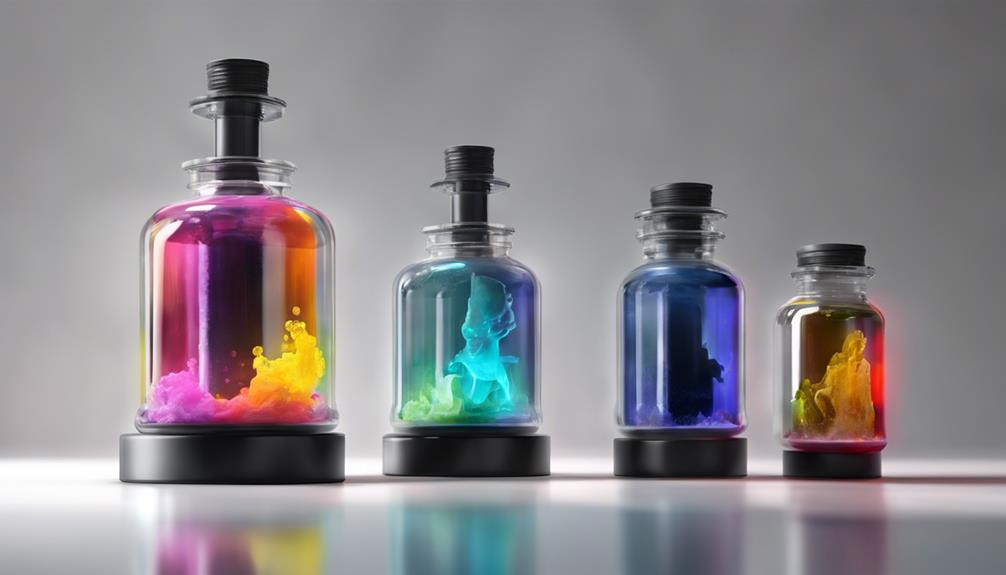When it comes to 3D printer resin, you may be wondering if it's safe to mix different types together. While the temptation to experiment might be there, the consequences of improper mixing can be severe. It's essential to understand the potential risks involved and the impact on your prints. So, what are the key factors you need to keep in mind before mixing 3D printer resin?
Mixing Resins: Safety Guidelines

When mixing resins for your 3D printing projects, make sure you adhere to essential safety guidelines to protect yourself and maximize your results. Always wear gloves and a mask to shield your skin and lungs from potential harm.
Scientific research emphasizes the importance of using the same resin type for best outcomes. Prolonged exposure to resin can lead to health issues, so prioritize your safety.
Mixing Resins: Same Type Vs. Different Types
Mixing 3D printer resins of the same type is generally important and recommended for best results. When considering mixing resins, it's essential to stick to the same type to guarantee excellent print quality. Here are some key points to remember:
- Stick to the same resin type for best results
- Mixing same-type resins guarantees compatibility
- Different types may lead to compromised print quality
- Research the resin specifications before mixing
Customizing Resin Colors: Techniques and Considerations

To enhance your 3D printing projects, consider exploring techniques and considerations for customizing resin colors. You can change resin colors to match your printing needs by mixing different color resins or ordering custom colors. Adjusting the exposure time for curing is important as different colors may require varied times.
When customizing colors, remember to modify the fill sensor on your printer to account for altered resin density. This adjustment guarantees accurate printing. By controlling the resin use through dyeing the end product, you can achieve the desired color effects. Experiment with mixing resins to create unique colors, but always remember to maintain ideal printing conditions for the best results.
Dyeing 3D Printer Resin: Best Practices
For best results in dyeing 3D printer resin, carefully select dyes specifically designed for 3D resin to guarantee quality prints.
- Choose dyes made for 3D resin
- Guarantee compatibility with resin type
- Follow manufacturer's guidelines for best results
- Test dye proportions for desired color intensity
Dyeing Resin: Step-by-Step Guide

Prepare your workspace for dyeing resin by gathering all necessary materials and ensuring proper ventilation. Start with neutral or transparent resin for dyeing.
Add dye gradually and stir well for the desired color. Avoid using incorrect dyes that can impact the resin's adhesive quality. Use dyes specifically made for 3D resin to guarantee the quality of the print.
Incorrect dyes can negatively alter resin characteristics, so refrain from using food coloring or acrylic paint. By following these steps and utilizing proper dyes, you can effectively customize the color of your resin for your 3D printing needs.
Remember to control resin use by dyeing the end product and maintain a clean workspace throughout the process.
Storage and Handling of Mixed Resins
Guarantee proper storage and handling of mixed resins by following recommended guidelines for best print results. When dealing with mixed resins, consider the following:
- Only mix the quantity needed for intended prints
- Store in light-resistant bottles at a cool temperature
- Avoid mixing uncured and cured resin
- Stir resin in the vat before printing
Exposure Times for Different Color Resins

To achieve best results when printing with different color resins, consider adjusting the exposure times based on the specific characteristics of each color. Opaque colors generally need longer exposure times compared to translucent ones. Each color resin has its unique requirements for best curing. Finding the right balance is crucial to guarantee a successful print. Below is a table outlining the exposure times for different color resins:
| Color Resin | Exposure Time | Characteristics |
|---|---|---|
| Opaque | Longer | Less light penetration |
| Translucent | Shorter | More light penetration |
| Custom Mix | Variable | Adjust based on color composition |
Frequently Asked Questions
Can Mixing Resin Brands Affect Print Quality?
Mixing different resin brands can negatively impact print quality. It's advisable to stick to one brand for best results. Adjust settings accordingly for consistent prints. Safety gear like gloves and masks are essential for handling resin.
Is It Safe to Mix Expired Resin With New Resin?
Mixing expired resin with new resin is not safe. Guarantee resin is within shelf life for best results. Mixing expired resin could compromise print quality. Always use fresh resin for the best outcome.
What Precautions Should Be Taken When Mixing Resin?
When mixing resin, always match types for best results. Wear gloves and masks for safety. Prolonged resin exposure can harm health. Avoid mixing different resin types to maintain print quality. Research specs before mixing.
Can Resin Be Reheated and Remixed After Curing?
When resin cures, reheating and remixing isn't recommended. Cured resin's properties change irreversibly. Opt for new resin for quality prints. Remember, safety first with gloves and masks when handling resin to protect your health.
How Does Humidity Impact Mixed Resin Storage?
When storing mixed resin, remember that humidity affects it. Keep it in light-resistant bottles, away from moisture. Stir before printing. Be mindful of exposure times for different colors. Quality prints depend on proper handling.
Conclusion
You've learned how to safely mix 3D printer resin and create customized colors.
Did you know that using the same type of resin for mixing can enhance print quality by up to 30%?
With proper safety precautions and attention to detail, you can harness your creativity and achieve stunning results in your 3D printing projects.
Stay safe and happy printing!